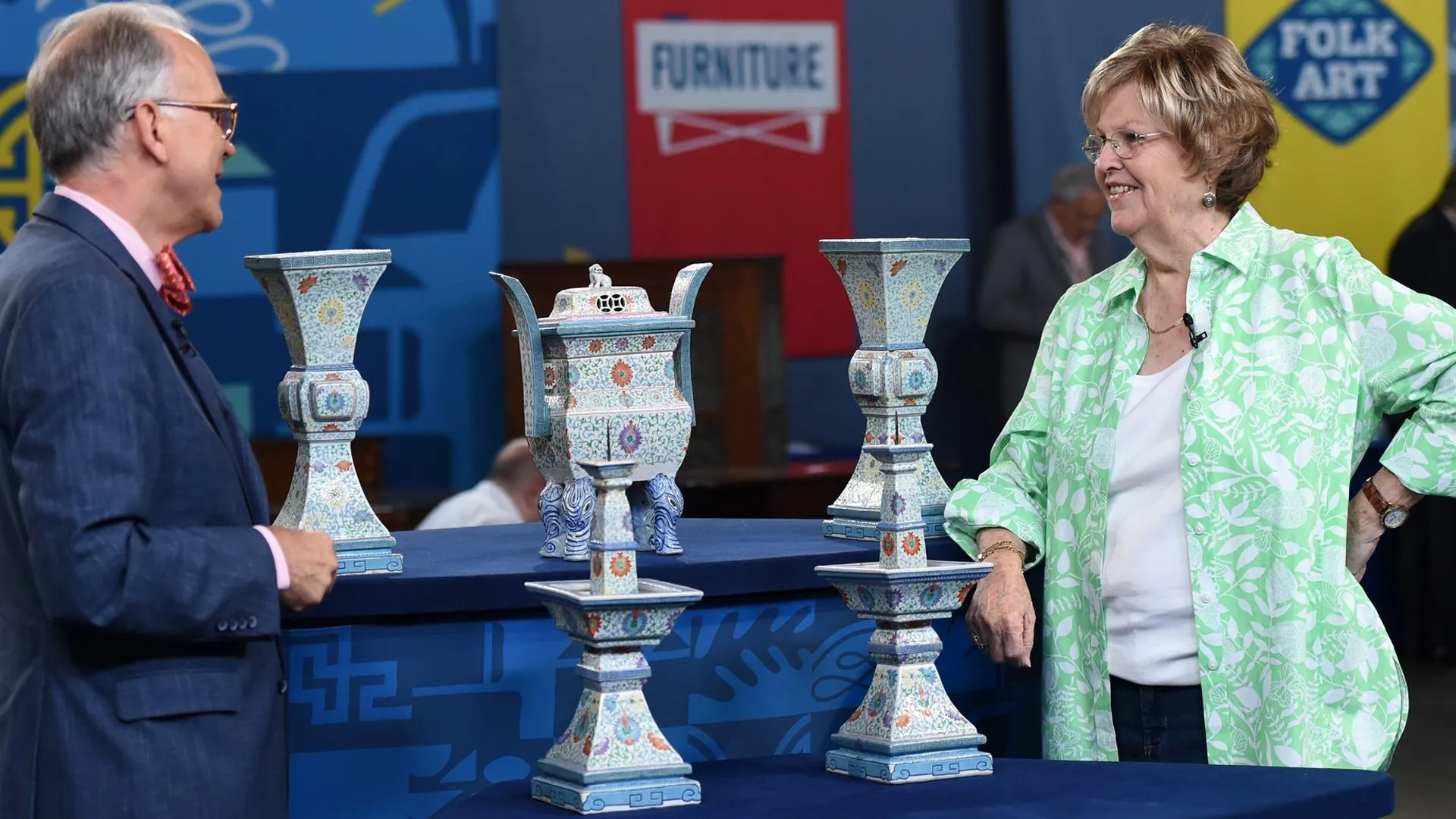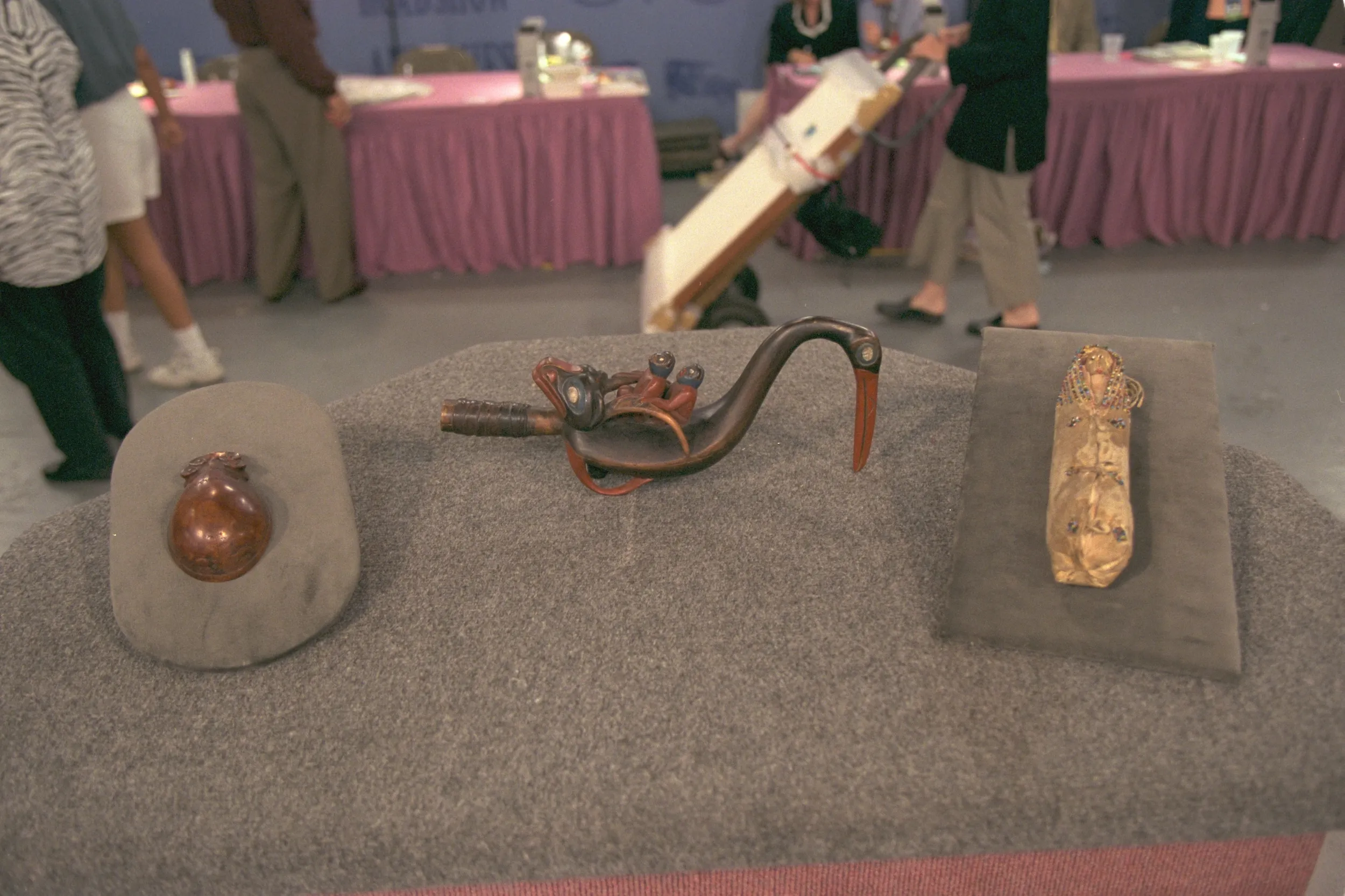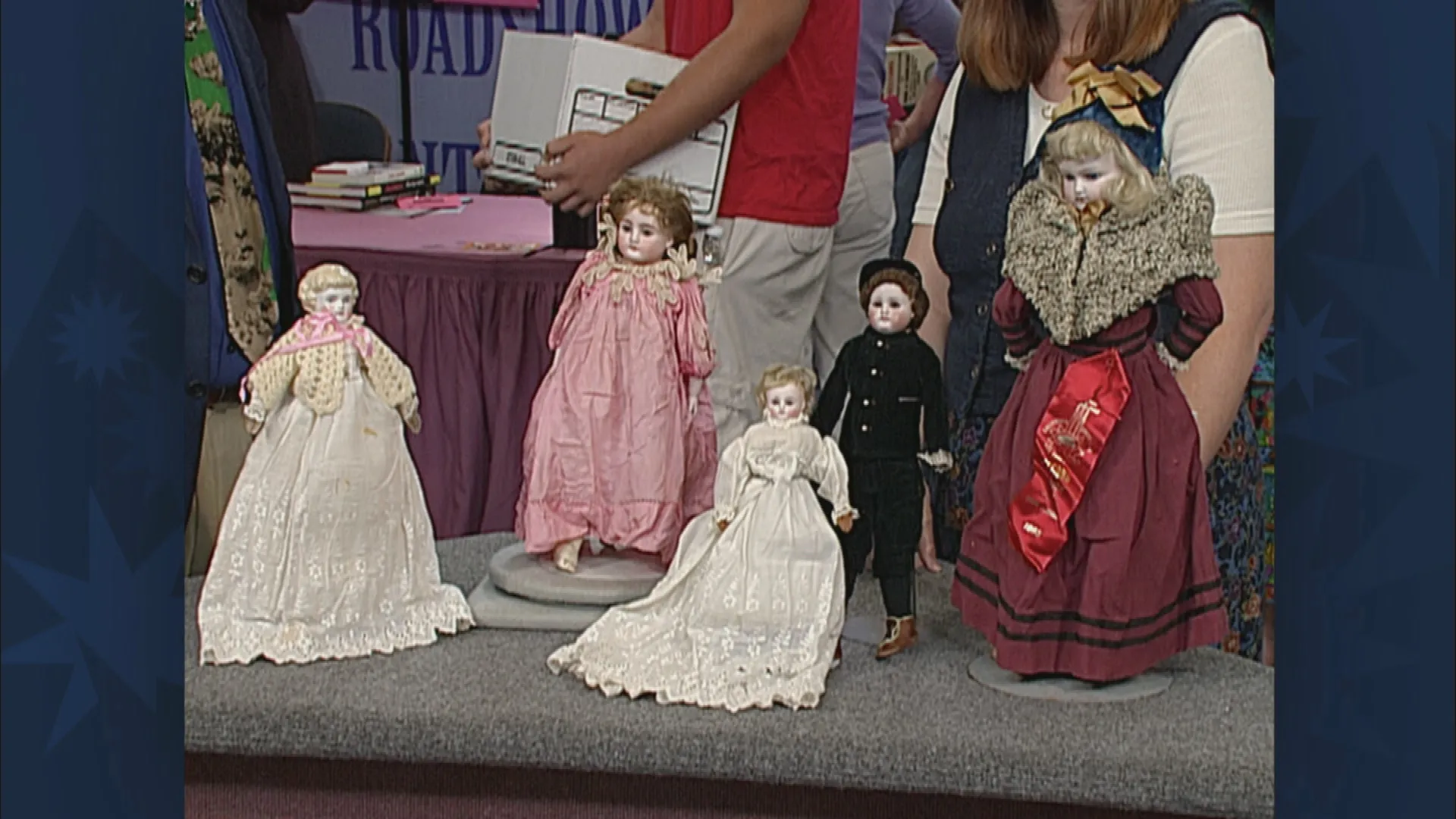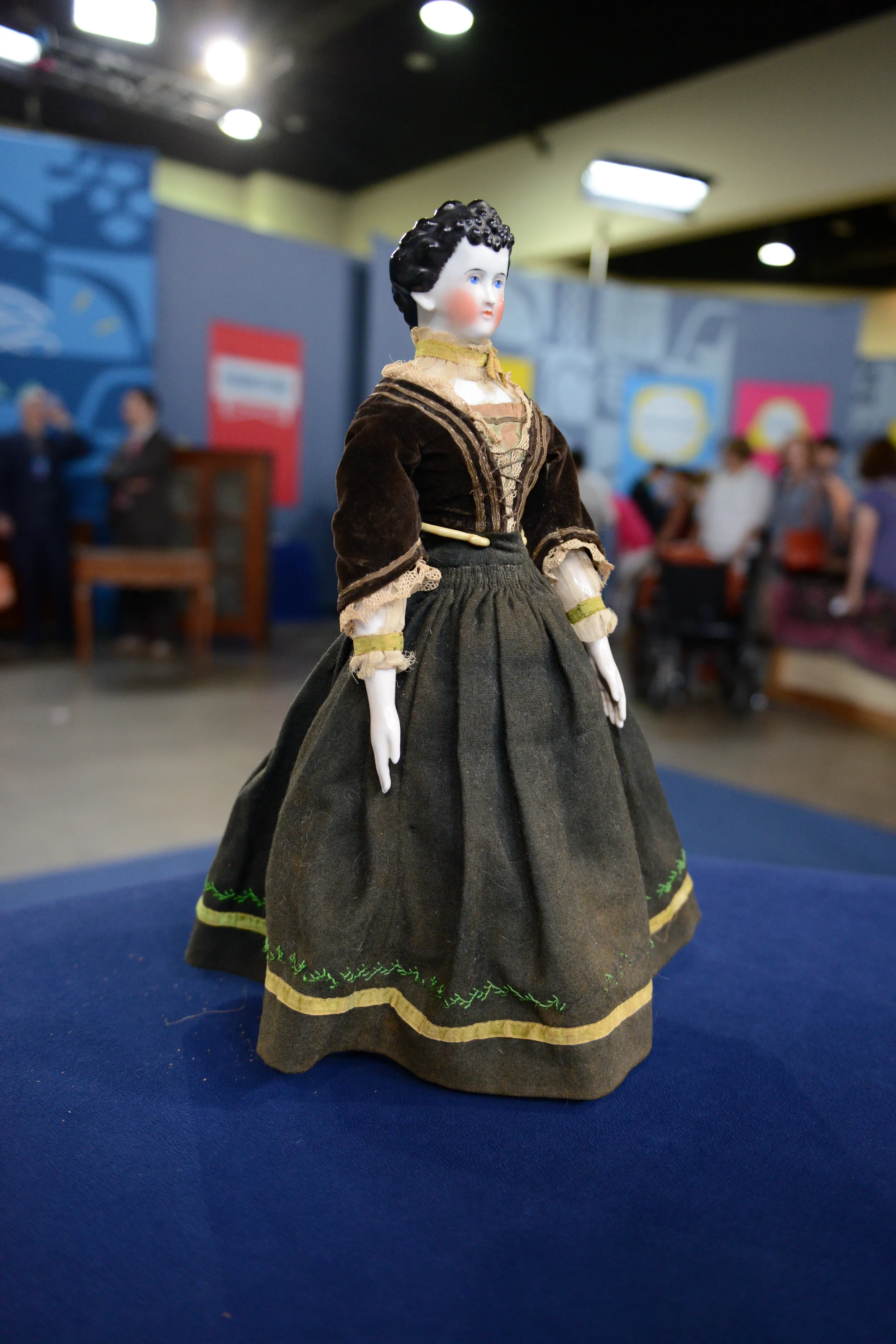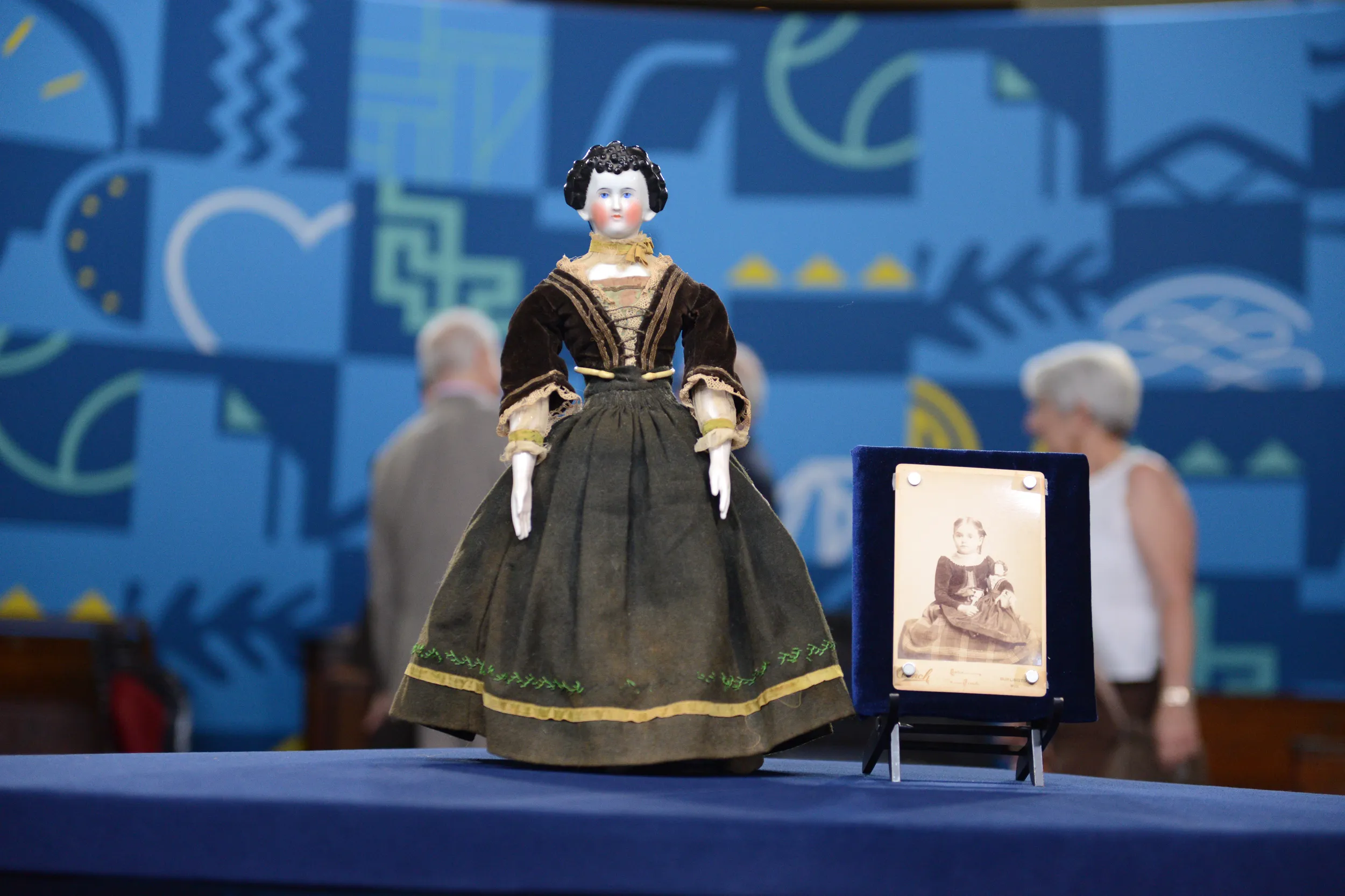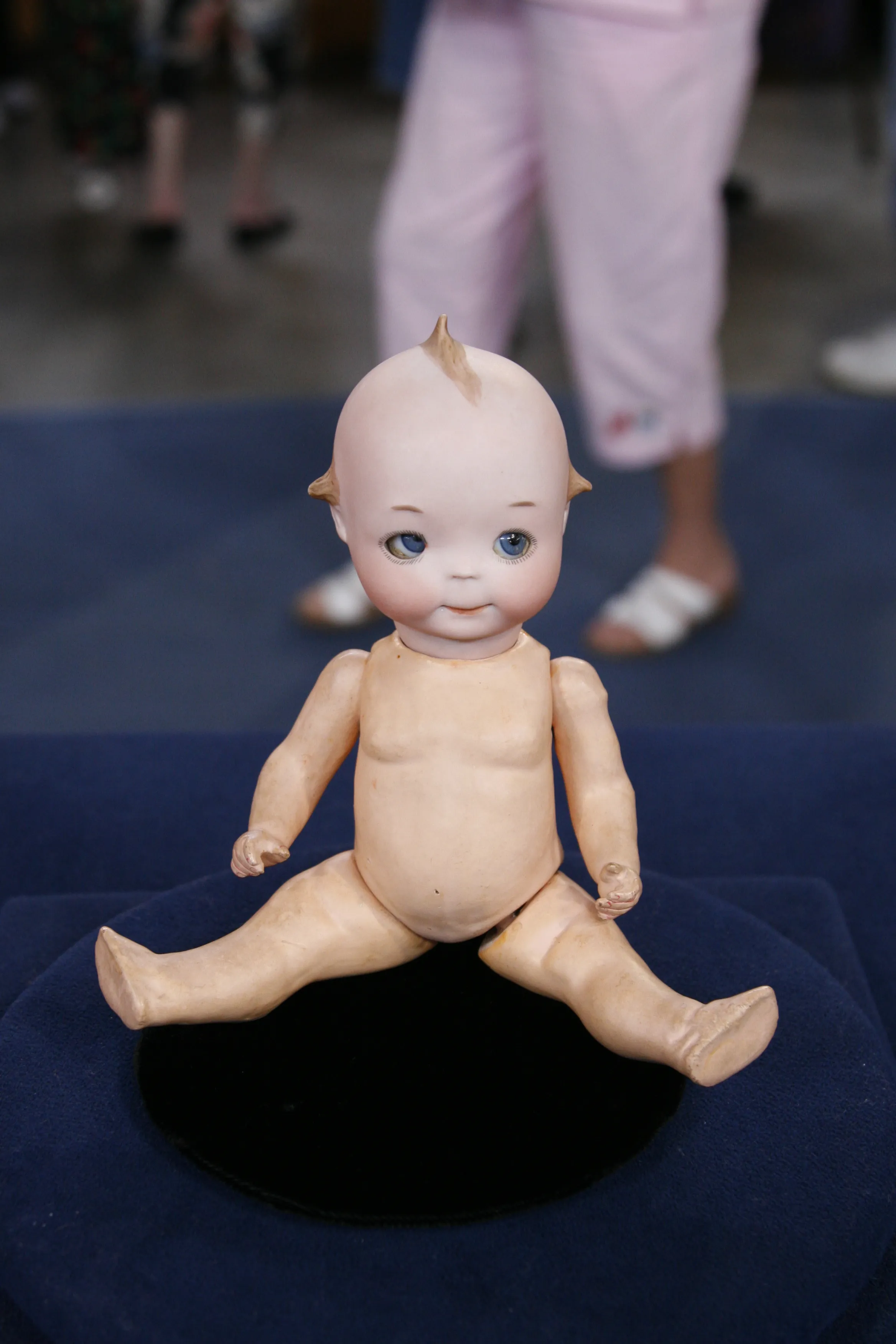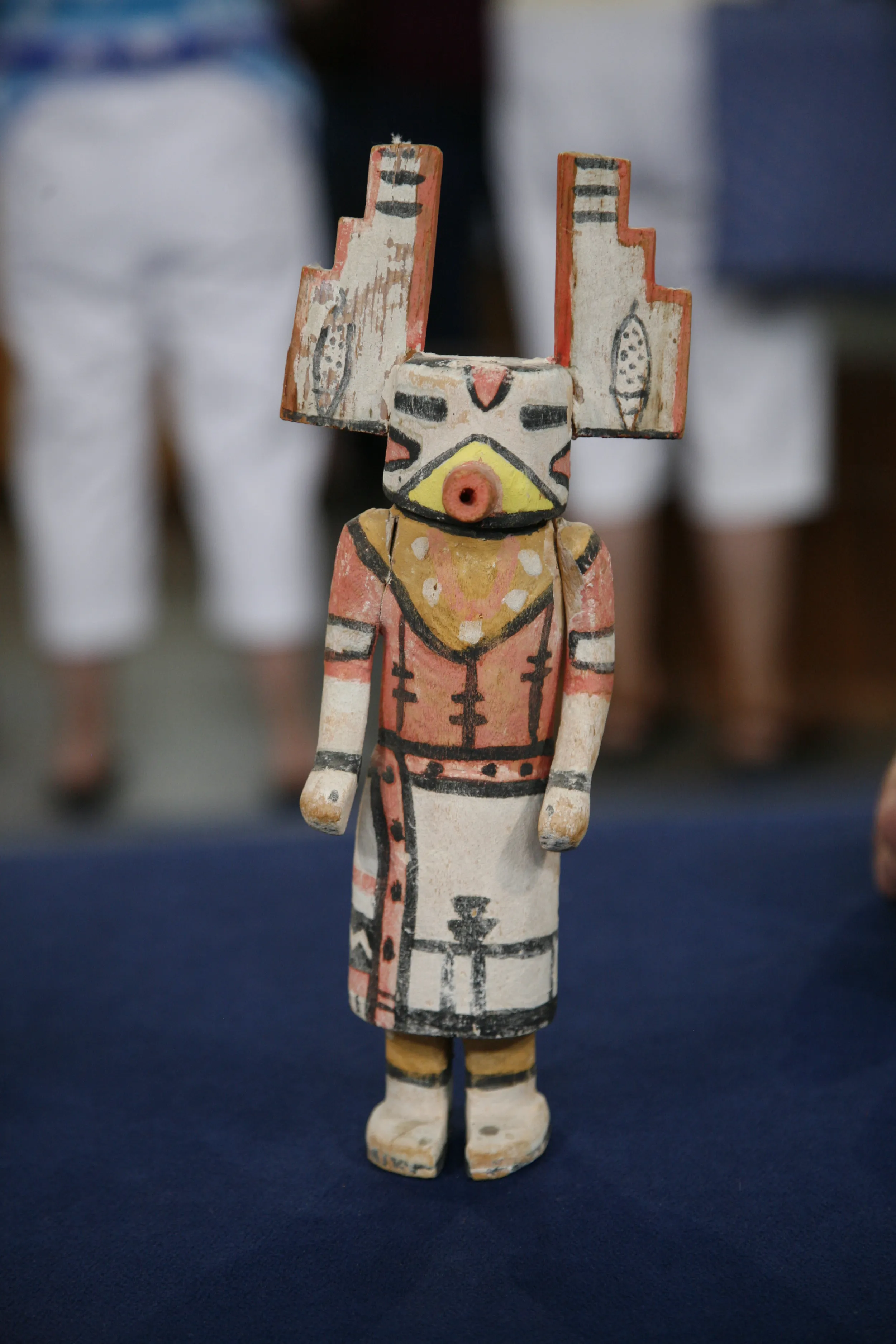GUEST: It belonged to my great-grandmother's sister, and it's been in the family ever since, passed on from her to my grandmother to me. The family came from Germany, so that's why I think it has German origins.
APPRAISER: Okay. Well, you are right, the doll was made in Germany, about 1880.
GUEST: Okay.
APPRAISER: When we evaluate dolls, we often use different criteria. One criteria is rarity. And the rarity of a china doll like this is how fancy the hairstyle is. And when you look at this doll, you certainly can see it has a very fancy hairstyle. Another is condition. And your doll is in absolutely amazing condition-- no damage, no chips, no cracks. The other thing is authenticity.
GUEST: Is this doll what it's supposed to be?
APPRAISER: Yes, the arms go with the head, the head goes with the body, and it has all of its original clothes. And what's wonderful about your doll is you have the picture of your great-aunt holding the doll, which is really a very delightful thing to have. Your doll is what we call a china doll. Now, china is differentiated from other materials in it has this high glaze on top of white porcelain. Dolls like this sometimes came with blonde hair, they sometimes came with kind of tinted, pink skin. But this is the classic style. And I'm going to turn it around so we can see the back. Then you see there's not only curls and twists, but there's also a band that goes across here. Often this band was painted in gold or a color, and if that had happened, it's called a decorated china. Another great feature, this doll has very unusual arms and hands. Often they are not this large and exaggerated, but they are correct. The picture even, the doll is almost in the same condition, the same outfit, everything that it's wearing now. The doll market has slumped a little bit, but on today's retail market, this doll would probably sell between $1,800 and $2,200.
GUEST: Oh, my gosh. (laughs) That's...
APPRAISER: A few years ago it would have sold for more.
GUEST: Okay, don't tell me that. (laughs)

